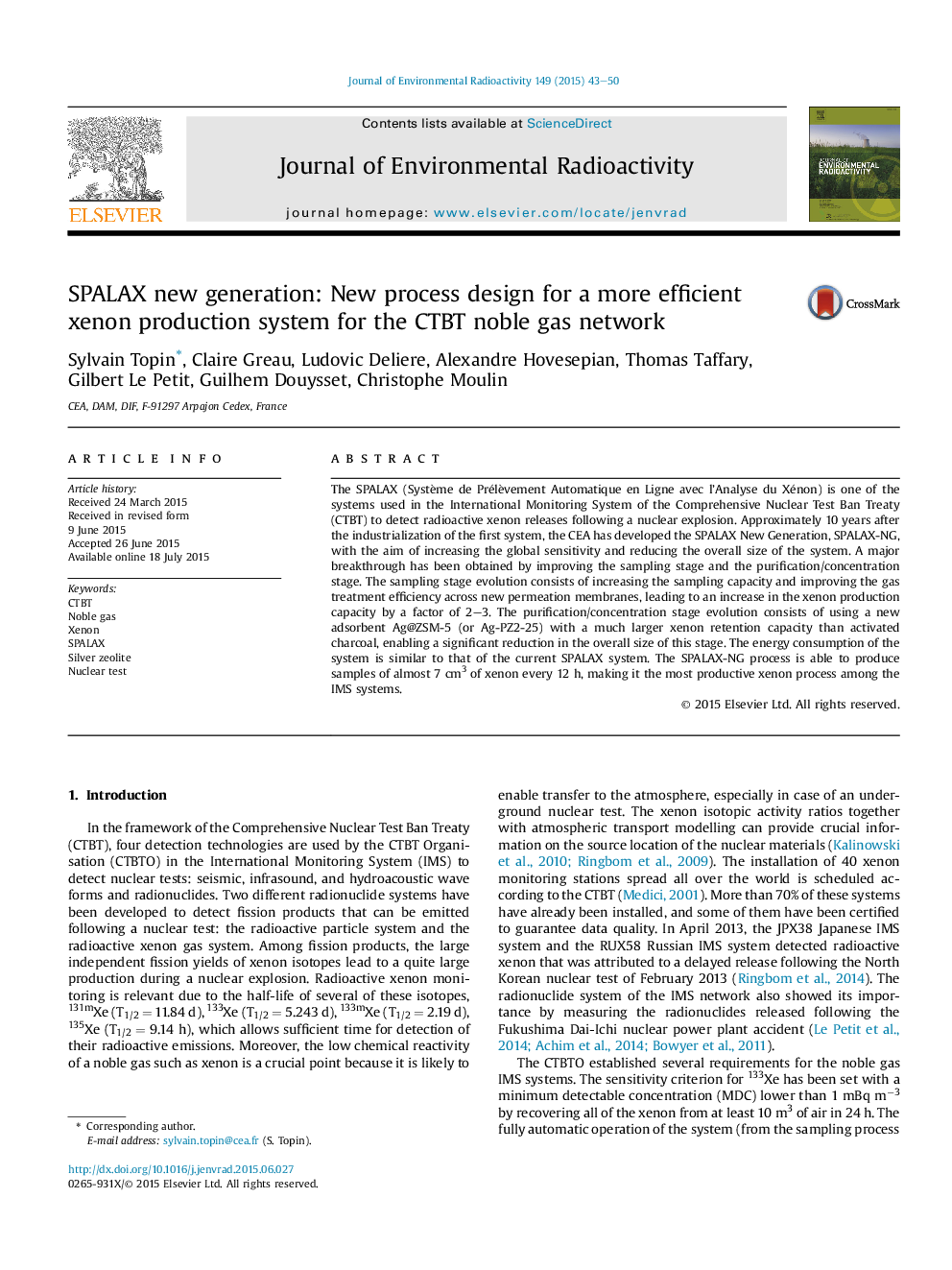| کد مقاله | کد نشریه | سال انتشار | مقاله انگلیسی | نسخه تمام متن |
|---|---|---|---|---|
| 1737823 | 1521584 | 2015 | 8 صفحه PDF | دانلود رایگان |

• The SPALAX process does not affect the Xe isotopic ratio that is a key parameter to determine the nature of a release (Fig. 2).
• The capacity to produce Xe increases significantly with the compressor flow rate and the number of nitrogen membranes (Fig. 3).
• The new Ag@ZSM-5 adorbant enables to concentrate xenon 12 times more than the usual active carbon (Fig. 4).
The SPALAX (Système de Prélèvement Automatique en Ligne avec l’Analyse du Xénon) is one of the systems used in the International Monitoring System of the Comprehensive Nuclear Test Ban Treaty (CTBT) to detect radioactive xenon releases following a nuclear explosion. Approximately 10 years after the industrialization of the first system, the CEA has developed the SPALAX New Generation, SPALAX-NG, with the aim of increasing the global sensitivity and reducing the overall size of the system. A major breakthrough has been obtained by improving the sampling stage and the purification/concentration stage. The sampling stage evolution consists of increasing the sampling capacity and improving the gas treatment efficiency across new permeation membranes, leading to an increase in the xenon production capacity by a factor of 2–3. The purification/concentration stage evolution consists of using a new adsorbent Ag@ZSM-5 (or Ag-PZ2-25) with a much larger xenon retention capacity than activated charcoal, enabling a significant reduction in the overall size of this stage. The energy consumption of the system is similar to that of the current SPALAX system. The SPALAX-NG process is able to produce samples of almost 7 cm3 of xenon every 12 h, making it the most productive xenon process among the IMS systems.
Figure optionsDownload as PowerPoint slide
Journal: Journal of Environmental Radioactivity - Volume 149, November 2015, Pages 43–50